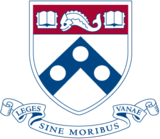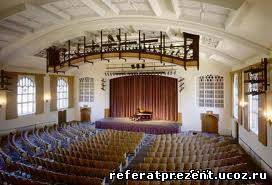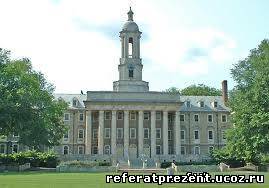University of Pennsylvania




Benjamin Franklin, Penn's founder, advocated an educational program that focused as much on practical education for commerce and public service as on the classics and theology. Penn was one of the first academic institutions to follow a multidisciplinary model pioneered by several European universities, concentrating multiple "faculties" (e.g., theology, classics, medicine) into one institution. Penn offers a broad range of academic departments, an extensive research enterprise and a number of community outreach and public service programs. It houses a medical school, dental school, business school, law school, nursing school, veterinary school, social sciences and humanities programs, as well as biomedical teaching and research capabilities. Its undergraduate programs are also among the most selective in the country.
In FY2009, Penn's academic research programs undertook more than $730 million in research, involving some 3,800 faculty, 1,000 postdoctoral fellows and 5,400 support staff/graduate assistants. Much of the funding is provided by the National Institutes of Health for biomedical research. Penn tops the Ivy League in annual spending, with a projected 2009 budget of $5.542 billion. In 2008, it ranked fifth among U.S. universities in fundraising, bringing in about $475.96 million in private support.
History
In 1740, a group of Philadelphians joined together to erect a great preaching hall for the evangelist George Whitefield. Designed and built by Edmund Woolley, it was the largest building in the city and it was also planned to serve as a charity school. The fundraising, however, fell short and although the building was erected, the plans for both a chapel and the charity school were suspended. In the fall of 1749, eager to create a college to educate future generations, Benjamin Franklin circulated a pamphlet titled "Proposals for the Education of Youth in Pennsylvania," his vision for what he called a "Public Academy of Philadelphia."[8] However, according to Franklin's autobiography, it was in 1743 when he first drew up a proposal for establishing the academy, "thinking the Rev. Richard Peters a fit person to superintend such an institution." Unlike the other Colonial colleges that existed in 1743—Harvard, William and Mary, and Yale—Franklin's new school would not focus merely on education for the clergy. He advocated an innovative concept of higher education, one which would teach both the ornamental knowledge of the arts and the practical skills necessary for making a living and doing public service. The proposed program of study became the nation's first modern liberal arts curriculum.
Franklin
assembled a board of trustees from among the leading citizens of
Philadelphia, the first such non-sectarian board in America. At the
first meeting of the 24 members of the Board of Trustees (November 13,
1749) the issue of where to locate the school was a prime concern.
Although a lot across Sixth Street from Independence Hall was offered
without cost by James Logan, its owner, the Trustees realized that the
building erected in 1740, which was still vacant, would be an even
better site. On February 1, 1750 the new board took over the building
and trusts of the old board. In 1751 the Academy, using the great hall
at 4th and Arch Streets, took in its first students. A charity school
also was opened in accordance with the intentions of the original "New
Building" donors, although it lasted only a few years.





